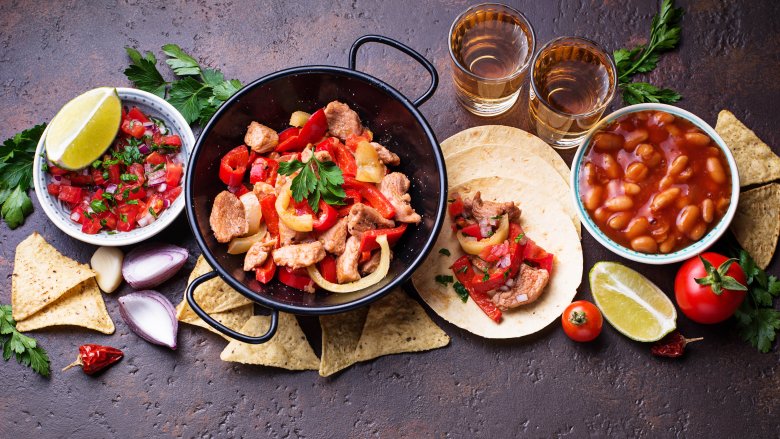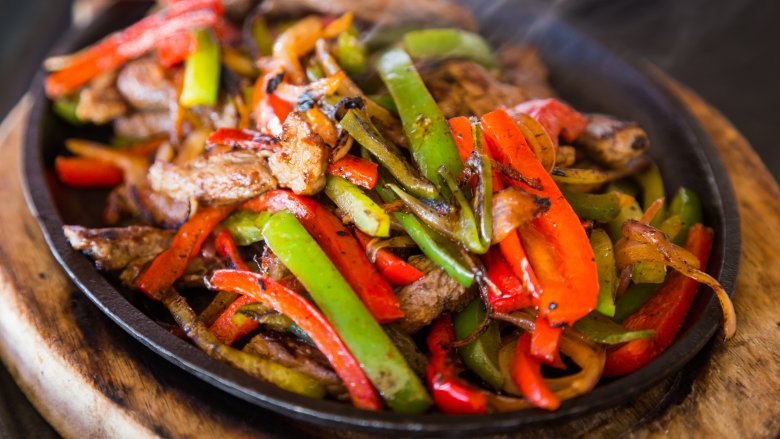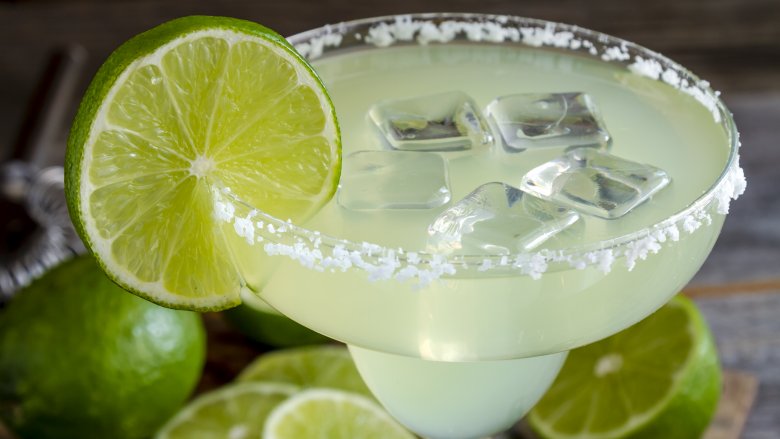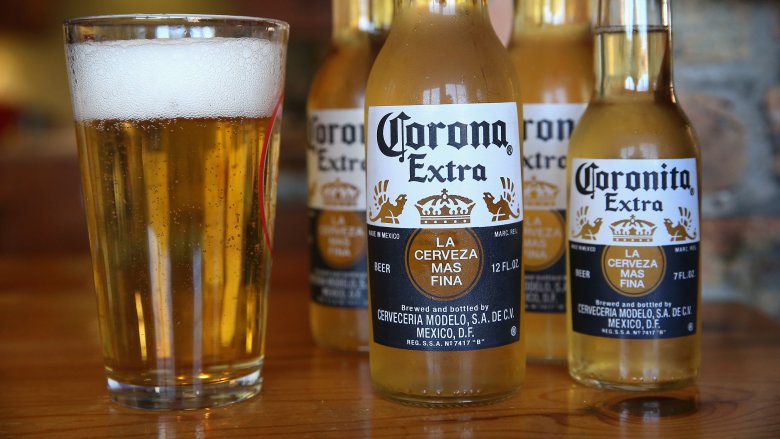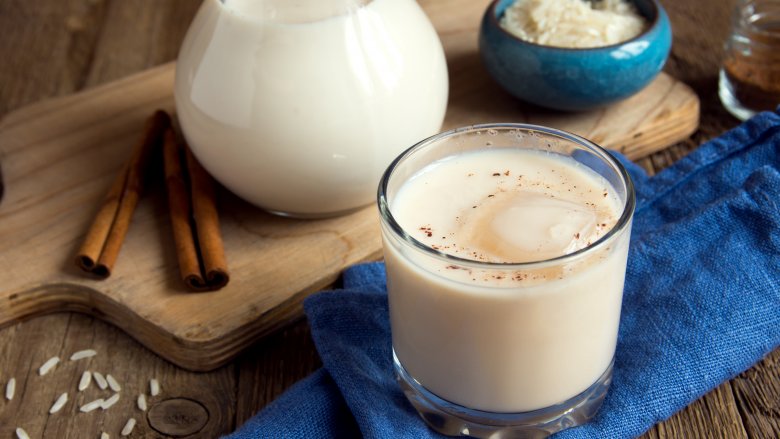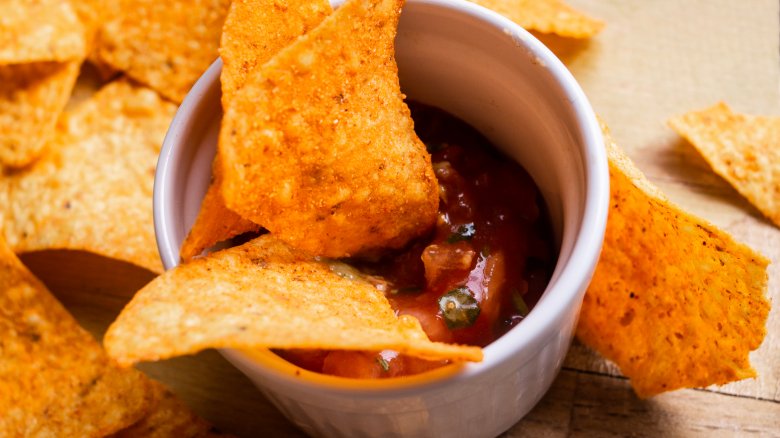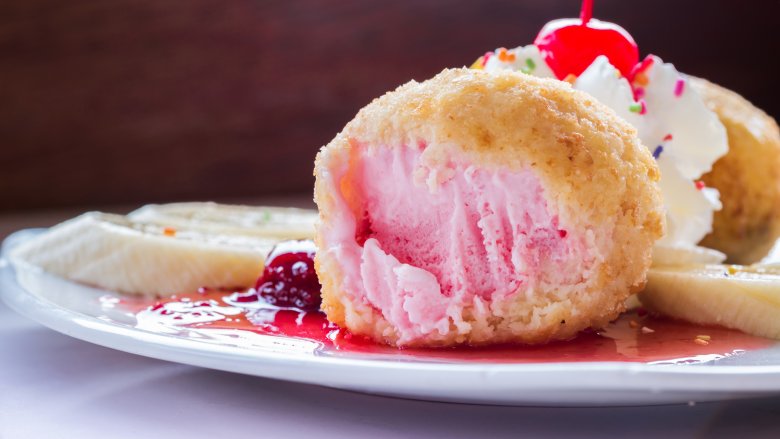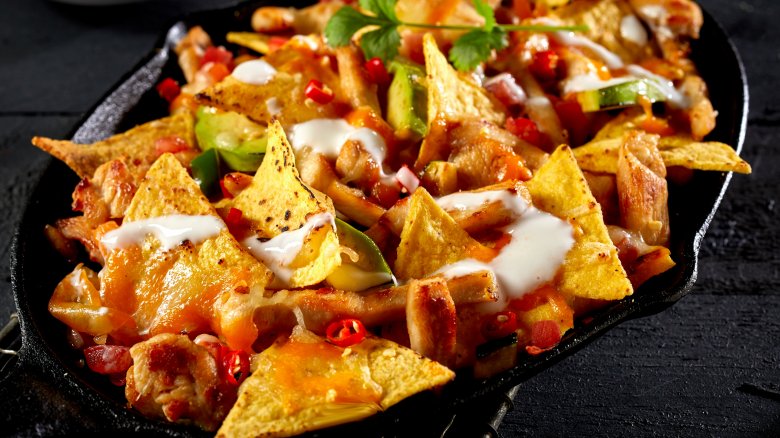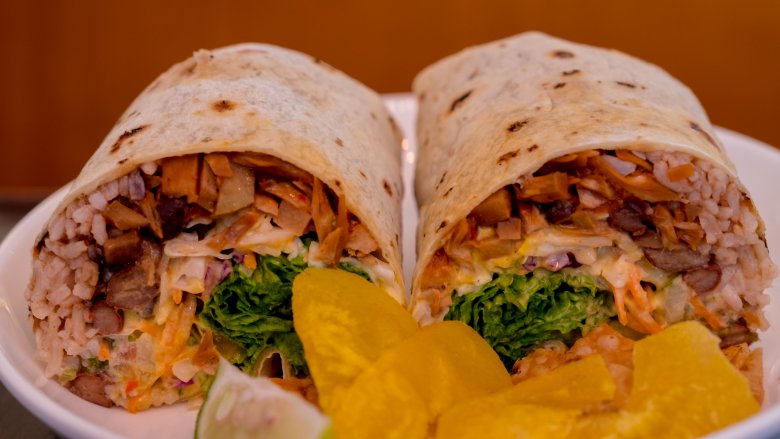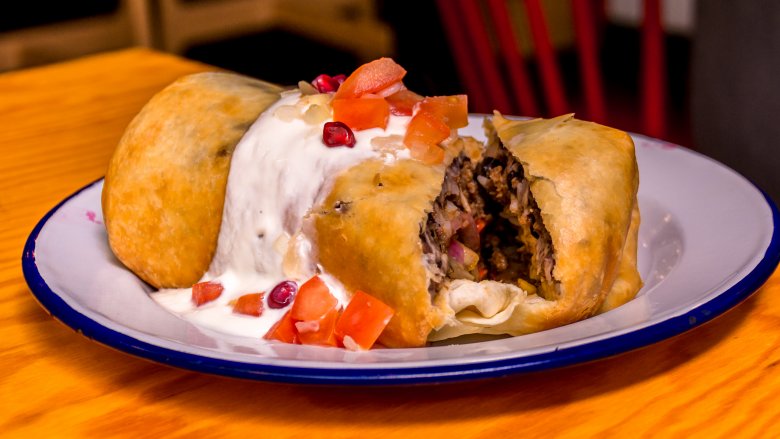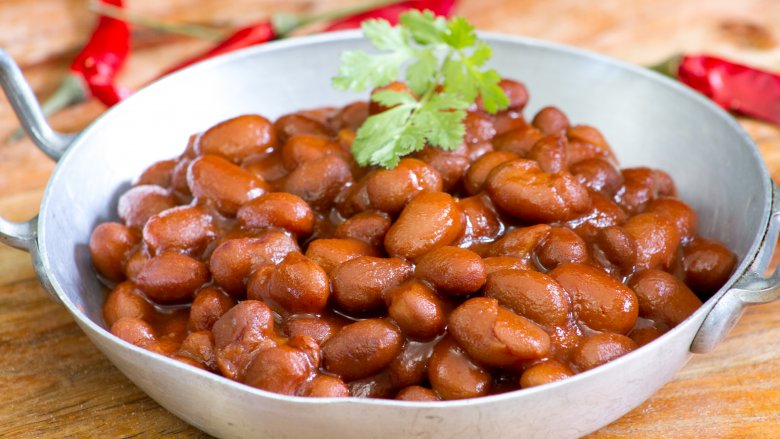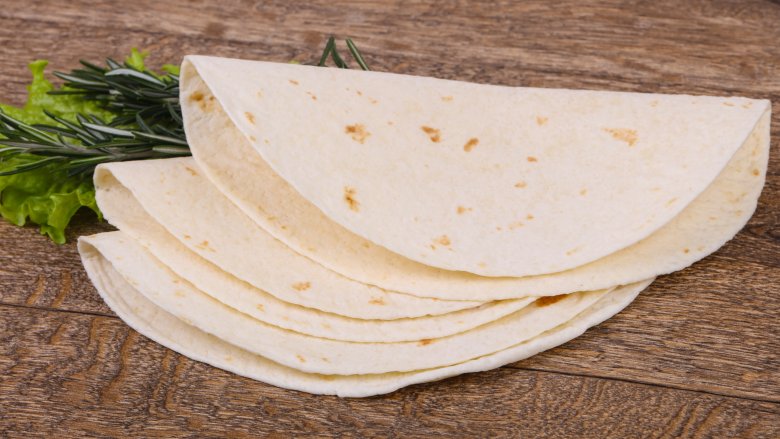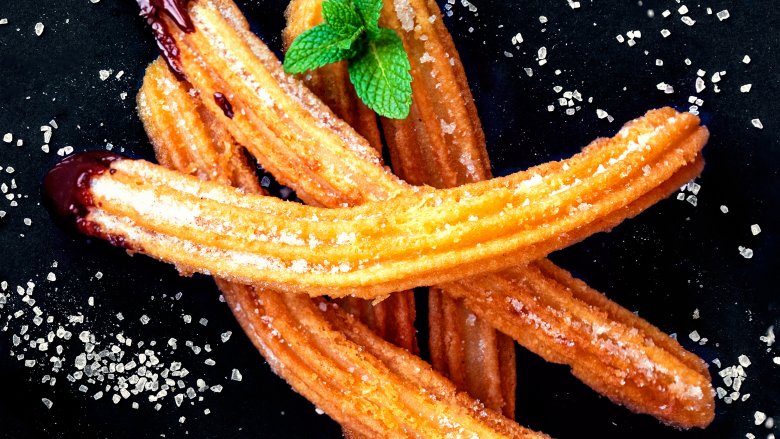Things You Should Never Order From A Mexican Restaurant
While much of Mexican food as we know it in the U.S. may actually have had its origins north (or east) of the border, one thing that's certain is its enduring popularity. Sometimes it seems as if we really do have a taco truck (or at least a Taco Bell) on every corner, and as of 2018 Mexican food ranked as the nation's 2nd most popular menu type in the country.
While Mexican (Tex-Mex, Californian, Arizonian, etc.) food can be amazingly tasty, it also has somewhat of a reputation for causing a certain amount of post-consumption digestive distress — hence such nicknames as "Tijuana Two Step" for that rather unpleasant phenomenon. Unfortunately, some of this reputation may be well-earned, judging from a number of food-poisoning outbreaks at Mexican restaurants.
If you'd prefer that your run for the border not end in a run for the restroom, or you just don't want some waiter giving you the side-eye for your embarrassing order, here are a few menu items to which you should probably say "no gracias."
Fajitas might be made with mystery meat
Fajitas may have originated back in the cowboy (vaquero) days as a tasty treat cooked over a campfire and made out of throwaway bits of beef, but didn't start appearing on restaurant menus until the late '60s. They really took off, however, in the '80s, when a German chef made "sizzling fajitas" a signature dish at a Hyatt Regency's restaurant in (of course) Austin, Texas. By the end of the decade, the dish, now inextricably linked to the word "sizzling," was definitely having a moment, appearing on most Mexican restaurant menus. By the '90s, fajitas were a fast-food staple as well. Even Mickey D's got in on the act, with a commercial they'd probably rather not be reminded of now that cultural appropriation is finally getting called out.
If that cringey commercial isn't enough reason to forego fajitas, here's another: Although they're supposed to be made from skirt steak, such factors as increased demand and import/export tariffs have raised skirt steak's price to the point where many restaurants find it prohibitively expensive. These restaurants have taken to substituting various cuts of mystery meat (labeled "beef for fajitas") which are so tough they need to be tenderized with enzymes which can easily over-perform to the point where meat turns to mush. Another tenderizing option involves marinating, but this is an easy way of spreading bacterial contamination so... you can't win. Unless you find something else to order.
Margaritas might make you ill
And not just from overconsumption, either. In fact, it's not necessarily the tequila or triple sec that's going to sicken you (if you don't overdo it, that is), but two of the other ingredients: The ice, which comes into play whether your margarita preference is frozen or on the rocks, and the fresh lime which will probably be used to garnish your glass.
Although ice may not seem like a likely cause of food poisoning, it turns out that it can easily contain contaminants that make people very sick. Not only were contaminated ice cubes linked to the 2015 outbreak of norvovirus in Taiwan, but both a 2011 University of Nevada study of Las Vegas bars and restaurants, and a 2017 study of several British coffee chains found that a high proportion of the ice they were using in drinks was contaminated with some very nasty (ahem, fecal) bacteria.
Limes can also easily spread disease. Food scientists at Clemson University warn that citrus garnishes can easily pick up contaminants from cutting boards, knives, or servers' hands, and the risk is especially high if the fruit is wet (as would be the case with a drink garnish). A 2007 study involving restaurants in New Jersey found that nearly 70 percent of the lemon slices they used in their drinks were contaminated with some type of bacteria or fungus. So, yeah, perhaps you're better off sticking with cerveza — but you should probably have them hold the lime.
Corona contains weed killer
Even if you skip the lime, there may be trouble ahead if your Mexican beer of choice is Corona. Corona is the most popular Mexican beer sold in the U.S., but some rather shocking news has surfaced about it. The U.S. Public Interest Research Group conducted tests on a number of different beers to see if they could detect the presence of glyphosate, the main ingredient in the world's most commonly used weedkiller, Roundup. Of the 15 types tested, Corona had the 5th highest amount. Wait, how did weed killer get in beer? Well, beer is made from grain, and grain crops are sprayed with chemicals that the harvesting, milling, and brewing process can't really remove.
Just because there are trace amounts of Roundup in your beer doesn't mean you need to get on the phone with the ambulance-chasing attorney, but it's something to keep in mind if weed killer is on your "never consume" list. That's because Corona contains just 25.1 parts per billion of the notorious glyphosate, which is safely below the EPA's tolerance levels. As to whether glyphosate is even cancer-causing — well, the International Agency for Research on Cancer does classify it as a "probable carcinogen," but then, alcohol is a definite one. So, basically, if you're going to be having a beer with your dinner, weed killer should be far down on your list of things to worry about since the alcohol itself might be worse. Isn't that reassuring?
Horchata might have horrific side effects
So if the booze served in Mexican restaurants isn't a safe bet, what's left to drink? Perhaps a glass of tasty horchata might hit the spot... or not. Anecdotally, it has achieved notoriety as a cause of diarrhea, at least if purchased from street vendors, and in 2012 a batch of homemade horchata even sent 38 Mexican kindergarten students to the hospital with diarrhea, vomiting, and fever.
So how could this seemingly innocuous sweet drink be so sick-making? The culprit turns out to be the rice that is the main ingredient in most Mexican-style horchatas. Rice can harbor a type of bacteria called bacillus cereus which can cause food poisoning with symptoms including both vomiting and diarrhea, as well as stomach cramps. Horchata is made by a process that involves soaking uncooked rice in water and then grinding or blending it, which creates an atmosphere very conducive to the growth of this toxin. As you never know just what food safety precautions are being taken in the restaurant kitchen, perhaps you're better off sticking with a nice bottled Mexican soda.
Chips and salsa may be pre-owned
You know how, when you get to your favorite Mexican restaurant, as soon as you sit down at the table they rush right over and serve you a complimentary basket of tortilla chips and a bowl of salsa? And you just dig right in, since it looks so tasty and you're so hungry and surely just a few little chips won't spoil your appetite too much? Well, the chips might not spoil it, but this piece of news might: There's a chance that the salsa and/or the chips might actually be leftovers from someone else's table.
Ew, really? Yes, unfortunately, it's not just a rumor. In 2016 a Mexican restaurant in South Haven, Michigan pled guilty to this disgusting practice after they were outed by a former server's mom on Facebook. Su Casa's owner used the "we just didn't know any better" excuse, and since they are still in business — it seems they did get away with it in spite of that meddling kid (or mom).
So was this Michigan mishap just a one-time thing? Sadly, no. A Facebook post from a customer at a restaurant in Fayetteville, Arkansas revealed that this restaurant also reused their salsa, and a thread on Quora had several restaurant insiders revealing that their workplaces also had similar food recycling policies in place. It's all very well and good to go green, but reduce, reuse, and recycle was never meant to apply to restaurant food.
Fried ice cream is totally not Mexican
Why is fried ice cream on just about every Mexican restaurant dessert menu? Is it even a tiny bit Mexican? Why no, it isn't. Its origin story is somewhat obscure. A Baltimore Sun reporter in the '80s claimed it was invented at the 1893 Chicago World's Fair, while an 1898 article from a newspaper called the Big Timber Express spoke of a Philadelphia company which encased a cake of ice cream in pie crust and deep-fried it in lard — kind of an ice cream/fried pie mashup. Yum. Further exploration of the historical newspaper archives provides a 1961 report from the Washington Correspondence Newspaper Enterprise Association's man in Japan where he discusses the fried ice cream offered by Tokyo's tempura restaurants. So, fried ice cream has quite the back story, but no connection whatsoever to Mexico.
In many people's minds, fried ice cream will be forever linked to the late, unlamented Chi-Chi's, a "Mexican" restaurant chain that originated in Minnesota and was founded by two guys with the oh-so-unMexican names of McDermott and McGee before going bankrupt and closing in 2004. So fried ice cream may be yummy, but it does have this embarrassing pedigree that you might not want to be associated with, lest you be outed as a former Chi-Chi's customer. If you wish to indulge in secret, though, Chi-Chi's, still in the food supply business, finally shared their totally un-Mexican recipe so you can make it at home.
Nachos are never quite what you hope they'll be
Nachos seem like a truly wonderful concept. Crunchy chips on the bottom, then layered with gooey melted cheese, and lots of delicious meats, beans, onions, peppers, and all sorts of other deliciousness topped off with salsa, guac, and sour cream. Yummy! In theory, that is. In reality, though, nachos tend to be more kind of.. meh.
In 2015, intrepid food journalist Arthur Etchells tried to get to the bottom of this. The previous year, he'd solicited suggestions as to Philadelphia's best nachos, but one comment he received via Twitter really stuck with him: "Every time I order nachos, I am completely underwhelmed... all of the time," opined a guy named Mikey (not the one from the old Life cereal commercial who hated everything). This struck a chord with Etchells, who went on to produce an opinion piece dissecting the disappointment factor in what he calls the "fundamentally flawed" dish of nachos. Several of the main reasons he gave were distribution of ingredients (always uneven), sogginess of chips, and overabundance of unasked-for sliced black olives.
So ask yourself, before you go ahead and order the nachos grande, what, exactly, are you hoping for, and do you really believe that this is going to be the time you finally get it? Then, perhaps, just order another appetizer, something less structurally challenged like Etchells' suggested queso fundido.
Burritos skimp on good stuff and bulk up with cheap rice
Rice in burritos, authentic or no? There's been a lot of discussion on this point, with some sources (The Daily Meal, for one) weighing in emphatically that rice in burritos is just wrong. According to burrito historian John Roemer, though, the rice might be as authentic as the burrito itself, which is to say... not truly Mexican, more like Californian. Roemer's iconic burrito history, a 1993 SF Weekly article called "Cylindrical God," tells how burritos originated when large flour tortillas (less likely to crumble than similarly-sized corn ones) were used by Sonoran miners to transport their rice and beans in an edible wrapper.
Authentic or no, adding rice is a cheap way for restaurants to bulk up burrito serving size. In fact, Chipotle (the chain that seemingly made the burrito ubiquitous) specifically instructs workers to skimp on more expensive ingredients such as meat, cheese, and guacamole, and even possibly tack on an upcharge when a customer requests extra. While Chipotle specifies that each burrito must contain a 4-ounce scoop of meat and rice, they do not go so far as to reveal the exact meat-to-rice ratio, but we have our suspicions.
Chimichangas are a nutritionist's nightmare
So a chimichanga starts out with your basic, average burrito, which can weigh in somewhere around a zillion calories as it is. (Your mileage may vary, depending on restaurant and ingredients, but this New York Times article found an average Chipotle burrito to have about 1,000 or more calories.) But then you take this burrito and you deep fry it, which can increase the calorie count from 50 percent to over 100 percent. And you don't stop there, oh no, you go ahead and drown the poor thing in melted cheese or other creamy sauces. Ay caramba! Just how good is your health insurance coverage?
By the way, we cannot blame Mexico for this caloric abomination. Not only are they not strictly responsible for the base burrito, but they sure didn't condone giving it the all-American state fair treatment, i.e. dunking it in hot oil. The first fried burritos, it seems, were made in Tucson, Arizona.
Beans, beans, the not-so-magical fruit
Apart from some rather antisocial after-effects, beans are often seen as some kind of superfood. They are credited with the power to prevent heart disease, lower cholesterol, manage diabetes, fight cancer and leap tall buildings in a single bound (well, this last one applies only to jumping beans). As it so happens, they also have their darker side. Beans are a possible trigger for migraines, and they may also interfere with calcium absorption as well as inducing the afore-implied gassiness. Eek.
Where things get really unpleasant, however, is when beans go so far as to cause foodborne illness disease. A Chipotle restaurant in Powell, Ohio had to close down in 2018 after 170 customers became ill with nausea, vomiting, fever, and diarrhea. Investigation found that the outbreak was caused by the clostridium perfringens bacteria, which is often present in dried or pre-cooked foods that have been prepared in quantity and kept warm before serving. At that particular Chipotle, it was found that both the pinto and black beans hadn't been kept quite warm enough, which could potentially have caused the mass food poisoning. It would seem that the more [beans] you eat, the better you don't necessarily feel, so perhaps you shouldn't eat your beans with every meal after all.
When it comes to tortillas, you just can't win
When you order an entree at a Mexican restaurant, you will likely be asked the all-important question: flour or corn? Your best bet may be neither, even if you're not on a low-carb diet. Should you opt for flour tortillas, you'll automatically be outed as a gringo. The syndicated weekly column Ask a Mexican surveyed readers in 22 different cities where it was published (as well as a few where it wasn't) as to which kind of tortillas were superior, and corn was the overwhelming favorite. Comments included "Flour tortillas were only invented because stupid gringos were getting sick eating corn tortillas because they forgot the lime-water step," "Corn tortillas come from the domain of the Aztec diosa, Chicomecoátl. Has anyone heard of a goddess of flour?" and "Real Mexicans eat real homemade corn tortillas."
So why not order corn tortillas either? Because cancer, that's why. A researcher from the National Autonomous University of Mexico (UNAM) found that something called aflatoxins, found in high levels in corn products, are quite carcinogenic and can, if consumed over a long period of time, even mess up your DNA. Wow, scary. She did say it's possible to counter the harmful affects of aflatoxin consumption by eating certain probiotic foods such as berries, carrots, spinach, red and green peppers, and tomatoes. So if you've got to have that corn tortilla, better ask for extra pico de gallo just to be on the safe side.
Churros are actually... Chinese?
Say what? Churros have totally got to be Mexican! They're just so... cinnamony — isn't that a Mexican dessert thing? Plus, they sell them from taco trucks, and even at Cinco de Mayo celebrations. They've even got a Spanish name. How could churros possibly not be Mexican?
Well, it's kind of a long story. Like, dating back to ancient China long. The churro was originally a breakfast dish called youtiao, which translates as oil-filled devil. The oil-filled part refers to the deep-frying, but the "devil" part was by way of throwing shade at an unpopular 12th century politician and his wife. Portuguese traders decided to borrow the snack but lose the politics, and they're also the ones that transformed what had been a salty snack into a sugary dessert instead. From Portugal the treat quickly spread to Spain, where it got renamed in honor of their curly-horned Churra sheep. The conquistadors then took their curly sheep horn-resembling pastries with them to the New World, thus indirectly providing the very first Chinese food delivery as well as introducing fusion cuisine centuries before it went mainstream.
So, if it's authenticity you're after, skip the churros. And if you'd like to show you're in the know by ordering a dessert that's somewhat more authentic (as well as being absolutely delicious), may we suggest sopapillas? Okay, so these may have actually originated in Albuquerque, but about 200 years ago back when New Mexico was still Old Mexico since the Mexican War hadn't happened yet.
